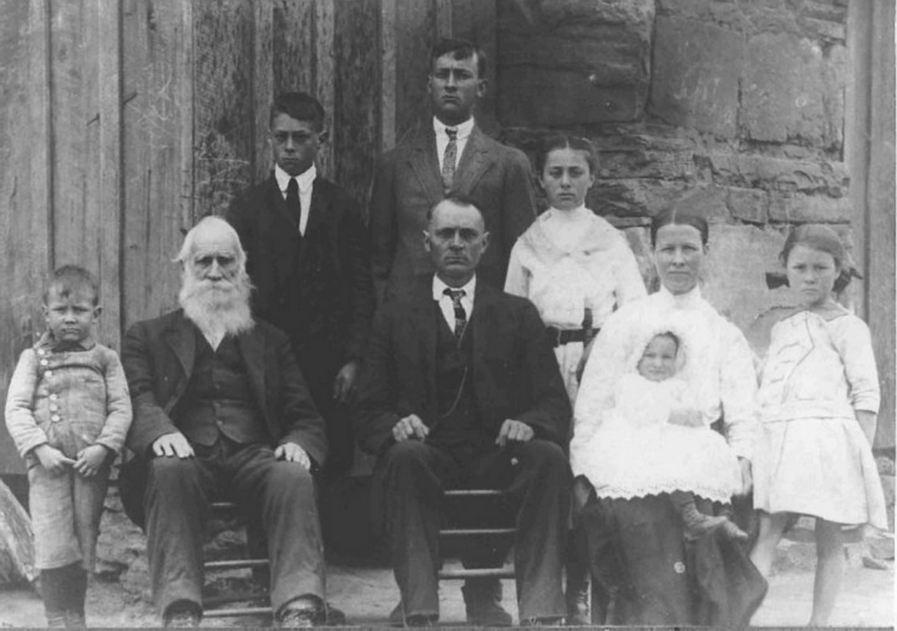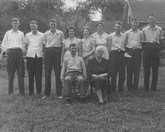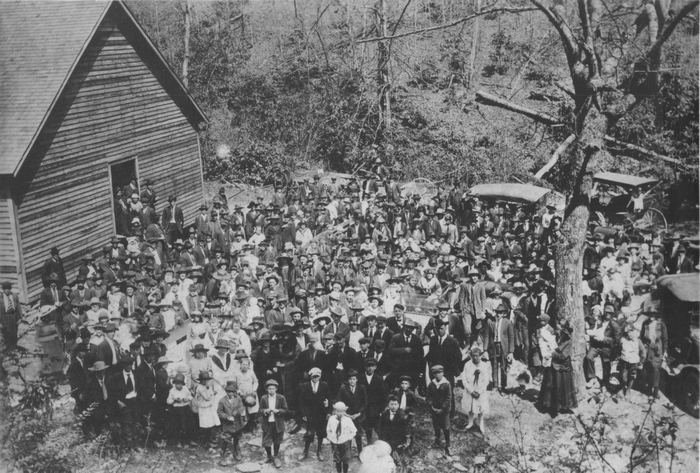Turkey Creek Baptist Church was organized
August 6, 1895. The charter members were:
Mr. S. V. Brown, Mrs. Lena Newton, Mr. J. A.
Brown, and Mr. and Mrs. J. R.
Alexander.
So begins the history of Turkey Creek
Baptist Church as reported by Ruel Whitmire in
The Heritage of Transylvania County, North
Carolina, 1995. The brief history
goes on to recount a common pattern among
churches. A new larger building began
serving the community November 24, 1946.
An even larger one opened to worship on January
24, 1965. Here, the congregation
continues to grow under the direction of pastor
Jack Holland. The current
congregation of around 700 members grew from a
small group of individuals connected through
blood and marriage and faith.
While the original church property also
served as a school and cemetery, the current
location houses only a very active church
congregation. The public school functions
became consolidated into the county school
system with Pisgah Forest Elementary now
serving the community. A new cemetery
came through an additional land transaction
from Samuel and Emma Orr on April 25,
1949. Though not adjacent to the main
structure, it still provides a central function
within the church community.
The humble beginnings as a one room school
house and church fits well with the
stereotypical frontier ideal. But in
1895, Transylvania County, North Carolina was
far from the frontier. Instead, plans
were being made to bring and expand railroad
and utility service to the area.
Significant manufacturing, mining and tourist
industries were firmly in place. All
the activity attracted industrialist George W.
Vanderbilt to invest in what became his Pisgah
Forest after beginning construction at his
vacation home in nearby Biltmore Forest.
All of these activities were contemporary with
the founding of Turkey Creek Baptist
Church. In 1903 it was George W.
Vanderbilt who donated the land and building of
the existing school, church and burial grounds
to the school trustees.
Despite the heavy industrial influence, many
community members retained mixed feelings about
adopting an increasingly industrial
lifestyle. Romantic ideals from a simpler
experience still dominated in 1939 as WPA
writer A. Long interviewed Marson Baynard as
part of the government sponsored Federal
Writer's Project. Baynard, under a
pseudonym, was caste into the literary role of
a romanticized farmer and hunter whose family
was divided as to accepting work at the new
nearby paper mill. The literary character
of the aging hunter and farmer expressed a
dislike for such work. Times
change. The death certificate of Marson
Baynard described him as having retired from
that same paper mill.
Marson Baynard died in 1969 and was buried
at Boylston Baptist Church near four of his
children who never lived long enough to
understand why churches and paper mills and
farms were important to their family. The
Ecusta Paper Mill closed in bankruptcy
proceedings in 2002. Turkey Creek Baptist
Church continues beyond these people and
institutions.
Hidden between these pages of common church
and civic records lies a unique moment in the
history of Turkey Creek Baptist Church.
Great grandson Steve Sitton recalls that Marson
Baynard came to live with his family in the
original church building along the waters of
Turkey Creek as the congregation moved on to
larger facilities.
Turkey Creek Baptist Church began largely
through the efforts of one extended
family. In its passing from that
beginning place, it touched the lives of
another family. In the larger picture of
Transylvania County history it is such an
insignificant detail it is perhaps not even
worth mentioning. But history is about
asking questions. And this small
intersection provides an intriguing one.
What would it be like to live in God's
house?
- - Linda Hoxit Raxter, originally
posted April 21, 2003
- Thanks to Linda O. Anders and
Steve Sitton their assistance in
locating source materials for this
essay
|







